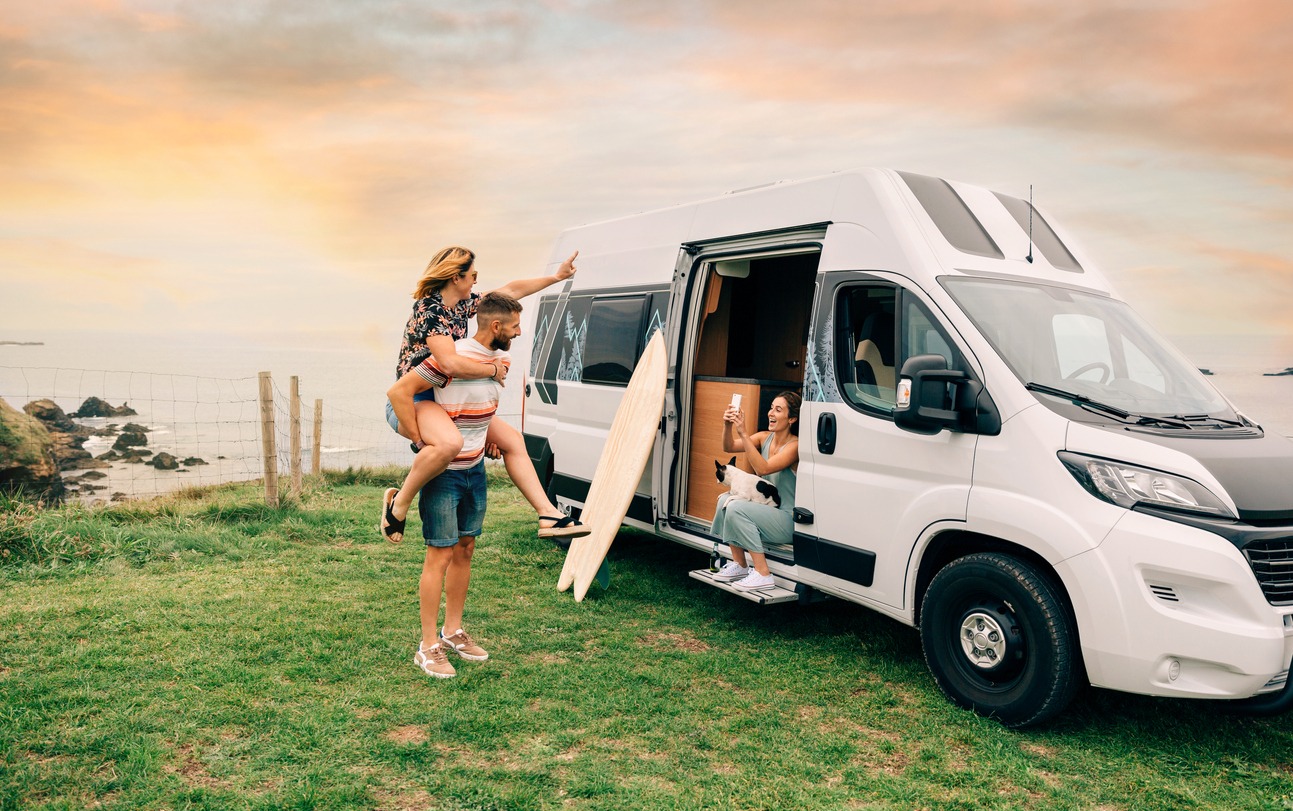Going on a road trip is indeed one of the fun ways to see different places, either alone, with friends, or with your family. Traveling by car allows you to go at your own pace, stop where you want, and truly experience a destination. However, it is sometimes challenging to plan a road trip, particularly if you have a limited budget. But did you know that road trips can also be among the most cost-effective ways to travel? When you know how to plan your budget for a road trip, there are ways you can stretch it further and enjoy your trip more.
Planning a budget-friendly road trip will enable you to go on an exciting adventure without breaking the bank. Whether you are a solo traveler or going on a road trip with friends or family, careful planning will help you make the most of your resources while still creating fun and lasting memories.
If you want to go on a road trip soon but are worried about your budget, we are here to help you. In this article, we are going to give you some of the best tips and tricks on how to plan a budget-friendly road trip. This way, you’ll be able to enjoy a great road trip while keeping your expenses in check. With this, let us dive in and begin planning your budget-friendly adventure.
What to Include in Your Road Trip Budget
When you are planning to go on a road trip, it is essential to budget for all the possible expenses that you may incur. If you do not have much idea about this, below are a few key things that you may want to include in your road trip budget:
Car Maintenance Cost Before the Trip
Before going on a road trip, it is essential to have your car checked or serviced. This way, you will be able to avoid any breakdowns or issues while you are on the road. With this, you have to factor in the cost of an oil change, new tires if needed, and other needed maintenance.
Transportation Costs
It is important to include in your budget the costs of transportation. These include payment for gas, tolls, and parking.
Lodging
If you are planning to stay in campgrounds or hotels, you also have to factor in those costs. Other cost-effective options for lodging on a road trip are RVing or renting an RV, or living in your car.
Activities
You also need to include a budget for any activities that you want to do during your road trip. These include entrance fees, tours, and other activities that you wish to do while you are on your trip.
Food and Drink
You need to account for the cost of food and drink, both while you are on the road and when you stop for the day. This includes all meals and snacks during your road trip journey.
Miscellaneous
Think of other items that you might need to include in your budget. These could be the use of travel apps, car rental insurance if you are going to rent a car, and other things like souvenirs.
Determine Your Budget
After learning about all the things that you need to include in your road trip budget, the best way to begin is to determine how much money you are willing to spend on your road trip. It is essential to know exactly how much money you have to work with for a road trip. Once you’ve finalized your budget, you may begin planning to allocate how to use it on specific things like food, transportation, lodging, activities, and more.
Also, remember to account for additional expenses, such as fuel costs, parking fees, tolls, car maintenance, and unexpected emergencies. It is wise to set aside a contingency fund that will cover unforeseen expenses. By carefully determining your budget, you’ll have a clear understanding of your financial limits and be better equipped to plan the rest of your road trip accordingly.
Pick a Destination
One of the crucial steps in planning a budget-friendly road trip is choosing the right destination. Below are some of the things you can consider when picking a destination:
Proximity and Accessibility
Try to search for destinations that are within a reasonable driving distance from your starting point. Pick a location that is closer, as this will help you save on fuel costs and reduce travel time.
Research Destinations Within Your Budget Range
You need to look for destinations that align with your allocated funds. There are places that have higher costs for attractions, accommodations, or dining, while other areas are more affordable. Therefore, pick a destination that offers a range of budget-friendly options.
Evaluate Attractions and Activities in Each Location
It is also a good idea to research the attractions, landmarks, and activities available in different destinations. Choose places that offer a variety of low-cost or free options, such as parks, hiking trails, scenic drives, and historical sites. This way, you’ll be able to have an enjoyable experience without spending a lot of money.
It is also great if you can create a shortlist of possible destinations based on these factors. Compare their costs, attractions, and available amenities to see which of them offers the best balance between affordability and enjoyable experience.
Plan the Route
After picking a destination, the next step is to plan your route. Having a well-planned route will help you optimize your travel time, minimize unnecessary expenses, and discover scenic attractions. Below are some of the tips and steps you can follow to plan your route for your budget-friendly road trip:
Decide on the Length and Duration of the Road Trip
You need to determine how long you want your road trip to be. To do this, you have to consider your available time off, your budget, and the attractions that you wish to visit. This way, you will have an idea of the overall duration of your trip.
Know the Best Routes to Reach Your Destination
It is also a good idea to research different routes to your chosen destination. Use reliable navigation apps or websites to compare travel times, distances, and any tolls or road conditions along each route. Pick the route that is most efficient and cost-effective for your road trip.
Consider Scenic Routes and Points of Interest Along the Way
Road trips offer a great way to enjoy scenic drives and explore interesting attractions on the way to your destination. Try to search for national parks, landmarks, viewpoints, or off-the-beaten-path attractions that you can include in your route. These stops can add value to your trip without increasing your expenses significantly.
Planning your route in advance will help you optimize your travel time, discover hidden gems, and avoid unnecessary detours and expenses. It is also great if you have a map or GPS navigation system as these are handy during road trips to stay on track.
Tips to Save on Transportation
Transportation costs can make up a significant portion of your road trip budget. In order to save money on transportation expenses during your road trip, below are some of the best tips we can give:
Calculate Fuel Costs and Plan Fuel-Efficient Routes
You can determine the approximate fuel costs for your road trip based on the distance, fuel efficiency of your car, and current fuel prices. Plan your route to include fuel-efficient highways or roads and avoid unnecessary detours. In addition to that, you also have to maintain proper tire pressure and reduce excess weight in your vehicle as these can help improve fuel efficiency.
Carpool or Share Expenses with Travel Companions
If you are going to go on a road trip with your friends or family, you may also consider carpooling and sharing the fuel costs. This way, you’ll be able to reduce individual transportation costs significantly. Aside from that, sharing the driving responsibilities can also help with the wear and tear of your vehicle.
Explore Alternative Transportation Options
Depending on where you plan to go and your travel plans, you may also consider alternative transportation options to save money. For instance, you could rent a fuel-efficient car instead of driving your own vehicle, particularly if rental costs are lower compared to the fuel expenses for a long trip. Aside from that, public transportation, such as buses or trains, might be a cost-effective option for particular parts of your journey.
Food and Dining
Another essential aspect of planning a budget-friendly adventure is managing your food and dining expenses during a road trip. Before you hit the road, it is best to plan your meals for each day of the trip. This way, you can avoid impulsive and costly food choices. You should also estimate a budget for food expenses and allocate a daily amount for meals, drinks, and snacks.
It is also a good idea to pack snacks and drinks. You can bring different kinds of snacks, such as fruits, granola bars, trail mix, or sandwiches. Doing this will help curb your hunger and prevent frequent stops at expensive convenience stores or fast-food chains. You can also carry reusable water bottles and fill them at water fountains or rest stops to save on the cost of bottled water.
If you want to try dining at your destination, you can also search for budget-friendly dining options. Research food trucks, local markets, and affordable restaurants that offer quality meals at reasonable prices. Instead of touristy restaurants, you can also choose local eateries, as they are usually more affordable and offer authentic culinary experiences.
You may also cook your own meals if you have access to kitchen facilities. If you are staying at hotels or accommodations, you can also take advantage of free breakfast or hotel amenities to reduce your food expenses.
Miscellaneous Expenses
As we’ve mentioned earlier, it is also important to account for miscellaneous expenses that may arise during your road trip. This way, you’ll be able to avoid financial stress and enjoy a smoother trip. During your road trip, you won’t be able to predict everything that may happen. That is why it is wise to have some extra funds set aside for unexpected expenses or emergencies. These may include medical needs, car repairs, or alternative accommodations in case your original plans fall through.
Therefore, you need to allocate a portion of your budget specifically for unforeseen expenses. Try to set aside around 10% to 20% of your total budget as a safety net. This way, if any unforeseen costs arise, you will have the needed money to address them without jeopardizing the success of your road trip. For added protection, you may also consider travel insurance, particularly for long road trips or when going to unfamiliar places. This can cover medical emergencies, trip cancellations, lost belongings, and other unforeseen situations.
Other Tips for Saving Money During Your Road Trip
To maintain a budget-friendly road trip, saving money while on the road is essential. By adopting some smart strategies and making conscious choices, you’ll be able to stretch your funds and make the most of your resources. Below are some more tips you can consider to save money during your road trip:
Use Loyalty Programs or Memberships
If you are always traveling or if you are planning to visit certain attractions, it is great to consider signing up for loyalty programs or memberships. These usually offer discounts, rewards, and exclusive deals that may help you save money on attractions, accommodations, or dining. You may also look for loyalty programs that come with rental companies, hotels, and popular tourist destinations.
Utilize Travel Apps and Websites to Find Deals and Discounts
You may also try using travel apps and websites that offer deals, discounts, or coupons for accommodations, dining, and activities. While using different apps, it is best to compare prices, read reviews, and check for any available promotions before making reservations or purchases.
Track Your Expenses Throughout the Road Trip
As you go, make sure that you stay within your budget. You can use a budgeting app or spreadsheet to monitor your spending and make sure that you are not overspending in any particular category. Checking your expenses regularly will help you identify areas where you can cut costs or make adjustments in order to stay on track.
Pack Your Own Essentials
You can also save on everyday essentials by packing them in advance. These include items like sunscreen, toiletries, medications, and other personal care items, which can be more expensive when purchased on the road. Having these things readily available in your luggage will help you avoid unnecessary purchases at inflated prices.
Practice Smart Shopping
If you need to buy supplies or souvenirs, it is a good idea to compare prices and choose the best deals. Try to shop at local markets, thrift stores, or outlet malls for affordable options. Avoid buying from high-priced shops and try to negotiate prices when appropriate.
Conclusion
Planning a budget-friendly road trip allows you to embark on an exciting adventure while keeping your expenses in check. A budget-friendly road trip is not only about saving money but also about making conscious choices and finding value in the experiences along the way. With proper planning and a frugal mindset, you can embark on an amazing road trip without compromising on the fun and excitement. We hope this article helped you learn more about how to plan a budget-friendly road trip.






